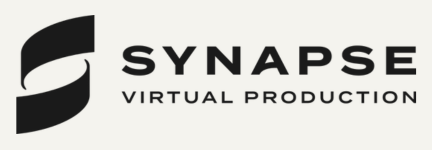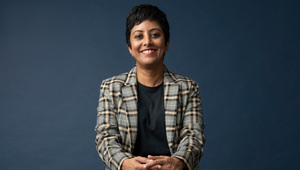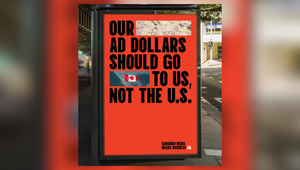
Creators as Strategists: The New Power Players in Brand Marketing

Having worked as a strategist and now as MD of the Australian Influencer Marketing Council (AiMCO), Patrick Whitnall told LBB in both roles “you always need to be tapped into culture and understanding the consumers, and you know either where it's currently at or where it's going next.”
“With the rise of social from the 2010s onwards, [as strategists we would] utilise that as a resource, as a way of better understanding communities and consumers at scale, because you were able to get a read and a barometer of what people on audiences were talking to.
“Creators themselves are so tapped into their community and the zeitgeist that they're doing a similar role, but perhaps what's different is that they're more tapped into actually having that conversation directly with their audience, rather than a strategist who may do that through research, though a qualitative or quantitative study based on where their focus is.”
Sophia Tassew, creative at London’s Impero, laughed “not to brag, but good luck finding anyone who’s swapped creator for Creative on both sides of the camera more times than I have. So, when I say creators aren’t just the face of your campaign, but the brains behind it, I’m not guessing. I’ve lived it.”
This year, YouTube, TikTok, and Instagram will attract more advertising income than traditional media. Yet, Sophia said, “many agencies still treat creators like the last stop in a production line.”
“Big mistake – the best creators aren't just content machines. They know audiences better than most brands do. Their data is live and their feedback loop is tight. They are constantly sharpening and fine-tuning their instincts. Their comments section is a 24/7 focus group.
If brands want to win the culture war, Sophia said they need to stop treating creators like couriers, and more like genuine creative partners.
“It's a new, awkward, and unfamiliar way to work. But then, isn't all change?”
Creators As Strategists
The best creators have “always filled a strategic gap” rather than simply accepting requests to make content without much thought behind it, according to Louna Raad, social media manager at the United Kingdom’s Bright Blue Day.
“We see the same pattern: briefs that talk about attention spans, or authenticity, but the thinking behind them is still shaped by people a few steps removed from how target audiences behave online. Creators aren’t just ‘added value’, they’re usually the ones quietly correcting flawed assumptions baked into the brief.”
To bring creators in after the strategy is set is limiting what they can do, Louna said. Alternatively, when you “bring them in at the start, with a clear view of the business objectives, not just the content output, they help build campaigns that don’t just look native but actually work natively.”
Once upon a time, creators “were slide 65 of the campaign deck” – but not anymore, according to executive creative director at Virtue Asia, Hayden Scott.
“Take Tira (an Indian multi-brand beauty platform), for instance. At its launch, the brand didn’t just brief creators – they brought them into the strategy room. Voice, tone, content formats were shaped in collaboration with the same people their audience trusts most. A very obvious shift from ‘influencer marketing’ to creator-shaped storytelling.”
He argued creator-led IP isn’t a trend, “it’s a shift in power”. When brands partner with creators for what they can bring in terms of originality, ownership, and ongoing relevance – rather than simply for reach – “the result is more than a moment. It’s a movement.”
“In India, we’re seeing platforms like Unacademy and even The Souled Store blur the lines between commerce and creator-led content, launching capsules and campaigns that originate from the creators themselves – not the brand’s creative team.”
Ansley Williams, head of influencer at Ogilvy North America said she is “increasingly seeing creators included in focus groups, planning sessions, and creative development — not as a formality, but because their proximity to real audience sentiment gives them a strategic edge.”
Many of the most valuable insights today don’t come from traditional research decks, she argued. Instead, they come straight from the DMs.
“[Creator] voices have always been a valuable asset to brands – but it’s not just about what they say, it’s about when you bring them into the process. Early collaboration unlocks their full potential as strategic partners, not just creative executors.”
She said co-creation at its best is when creators are seen not just as influencers, but as collaborators, consultants, and “co-architects of the brand story”, adding their understanding is “often more emotionally nuanced and platform-native than any trend report could offer.”
What Creators Can Bring
When it comes to what exactly it is that creators bring to campaigns, head of creative and composer at Los Angeles music and sound studio Affect, Patrick Zappia, pointed to the practical advantages.
“Low cost iteration is a big one. Partnerships can span many many posts and you can just have a creator partner on the hook til you hit virality. Tons of at-bats for super cheap, testing things out in a potentially-viral environment is how creators have been able to bury the most well thought out campaign strategies in the last few years.
“Music Creators get influencer-level engagement and attention and a lot of them are doing it from their bedroom. At the present moment they're underpriced and overpowered. We just spent a ton of money building research tools for surfacing extreme-engagement creators.”
Olivia Rotondo, marketing and social media manager at Alkemy X, made a case for “knowledge is power,” and that fact that “with community comes knowledge; the more knowledge you have, the better.”
“What language or phrases do they use? What music do they like? What trends are they interested in? What makes them leave a comment? What motivates them to share it with their friends? The more specific questions you can answer about them and the more you can anticipate their needs, the better you can cater to these particular wants in the content to keep them engaged. Brands are looking for the answers to these same questions to break through as well.”
The opportunities for brand collaborations are continuing to grow, Olivia said, alongside the number of creators making names for themselves online – and growing the audiences that come along with that.
“The brands doing it right are tapping into the niche trends and working with microinfluencers who have highly engaged audiences,” she added. “Taking the time to find creators who have an authentic connection with your brand is worthwhile.”
Head of strategy at Only Child, David Weinstein, added while most creators are brilliant strategists, they've been conditioned to think campaign by campaign because that's how brands treat them.
“Real growth requires people who think in years, not weeks. When you combine a creator's audience instincts with a publisher's long-term playbook, you stop cycling through campaigns and start building something sustainable,” he said.
Connecting With Brands
So does this rise of creators as strategists signal a deeper shift in how brands connect with culture? Tom Sneddon, co-founder and managing partner at London’s Supernova (Atomic London’s social creator agency), said “In the social days of old, marketers and agencies alike were obsessed with everything and everyone falling neatly into their place and staying in their lanes.”
These days, that’s not the case as often as it once was.
“Audiences want to see the workings out, craving the real and trustworthy – forcing brands to live out their values and show their true cultural colours.
“The rise of creators as strategists is happening whether brands are ready or not, but the opportunities are enormous for those who are willing to embrace it.”
Moving away from social as a “one-size-fits-all” space to “a passion-centric multiverse” has driven major change when it comes to framing what success looks like, according to Tom. These days, the focus is on outcomes rather than just outputs.
“But in turn, delivering these hyper-personalised content streams is also challenging traditional marketing budgets, structures and processes – as more and more brands recognise the need for specialists rather than generalists.”
Rachel Matovu, group strategy director at Amplify, agreed “brands can either be in conversation with the audience, or be the topic of conversation.”
“Getting involved always feels like a good step but we need to do more than jump into the comment section on viral trends (Duolingo RIP was tough). Working with creators for their strategic insights, not just their influence, can be a good first step. Their community building know-how and creativity means collaborations can stretch to more than delivering assets. Campaigns that nail it - like Miu Miu x Coco Gauff or Rhode’s clever, culturally attuned accessories – often use creators as partners.”
Jumping into the conversation is only the beginning, she argued. Staying in that conversation can be the answer to driving long-term impact.
“Even if creators don’t feature in the campaign, their insights can be built-in earlier in the process. Deep into brand worlds, creators are breaking down moves and delivering spicy takes from consumers, showing they are more invested than anyone.”
-
Part Two – Creators as Strategists: Beyond Influence and What Comes Next















